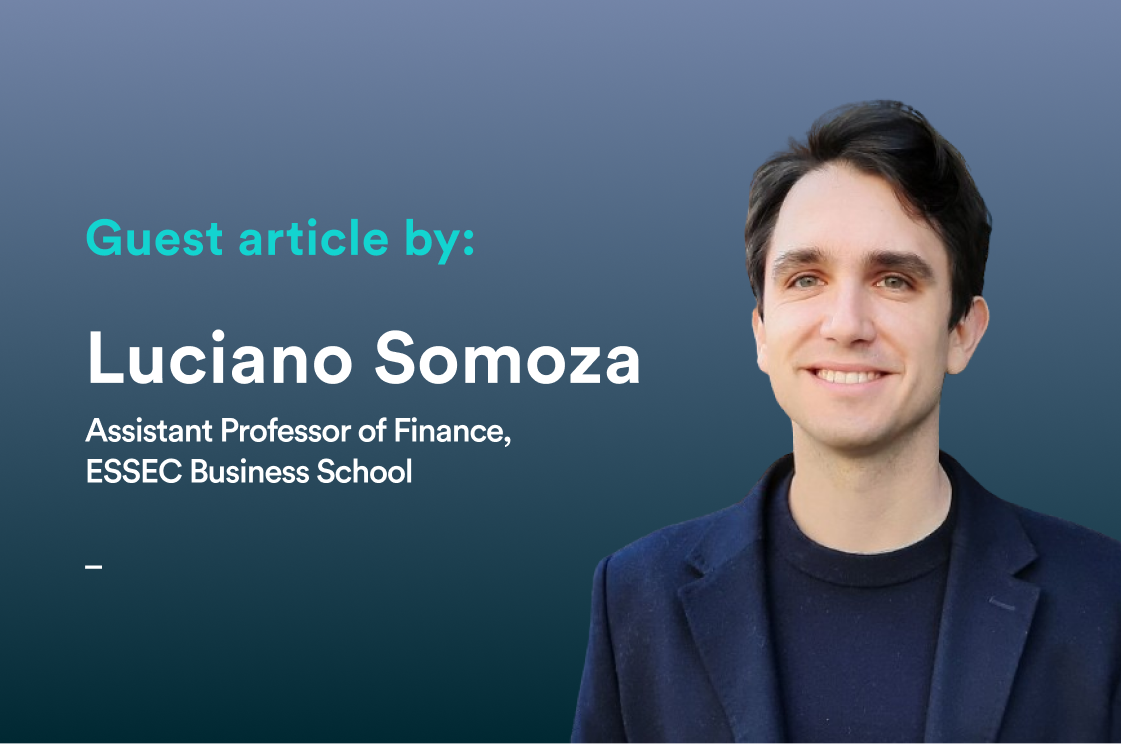Table of Contents
How our banking system works
Every month, when you receive your salary, you decide to lend it to your bank. In other words, every month you are making an investment: you are investing in your bank’s debt by leaving the money in your deposit account. Here, you typically have two choices: either you commit the money for a certain amount of time in exchange for an interest payment on your investment (i.e., fixed-term deposits), or you forgo such a yield in order for your investment to be fully liquid (i.e., a checking deposit). In this context, liquidity means the possibility of liquidating your loan freely at any time, for instance, for buying an ice cream or an iphone. To better visualize this trade-off, if the ECB interest rate is 3.65% and your bank pays you 0.25% on your checking account, you are effectively paying your bank 3.4% for the possibility of holding a liquid asset.
For a very long time, liquidity was a very valuable feature, as financial assets were hard to access and seldom liquid. Our grandparents grew up in a world where very few people were sophisticated enough to invest in the stock market or in bonds, and where liquidity services were crucial. Hence, the equilibrium where banks intermediate between depositors and companies, transforming illiquid risky well-remunerated investments (loans to companies, mortgages, etc.) into safe, liquid, poorly- remunerated assets (i.e., deposits) was highly beneficial for all parties involved. The modern banking system evolved in this context and is deeply rooted in our everyday experience, to the point where we barely notice it.
Nevertheless, things have radically changed. With the digitalization of financial markets in the 1980s and 1990s, together with the rise of new investment products like ETFs, liquidity has become extremely cheap. Today, liquidity is everywhere. Most mainstream financial assets, like treasuries, large-index ETFs, and well-known stocks, are (almost) as liquid as cash. While the supply of financial liquidity exploded, the price of liquidity collapsed. Any sophisticated investor or large company would never accept paying 3% or 4% a year for holding a liquid asset and usually prefers to keep their money invested in short-term liquid securities, earning something close to the ECB interest rate or higher.
In this context, the last class of investors still paying for liquidity are ordinary people, de facto leaving money on the table for banks to take. Few people realize that their bank deposit is akin to an investment in their bank. Even fewer realize that receiving no interest on liquid deposits is the equivalent of paying the risk-free rate (ECB rate) to the bank in order to purchase liquidity. How would people react if banks explicitly stated “-3.65% for liquidity services” on their bank statements?
UnitPlus fundamentally rethinks the banking and saving industry
Solving this contradiction is the genius intuition behind UnitPlus. What if we automatically invest people’s cash into ETFs and link their investment account to a payment card, allowing them to harness the modern market’s liquidity while earning a yield? Instead of paying their bank 3.65% for a liquid asset, they would pay us a much smaller management fee. As an academic studying banking and fintech, I was enthusiastic when Fabian (UnitPlus CEO, editor’s note) pitched his idea to me.
Users can get the ECB risk-free rate by holding fully liquid ETFs. This simple mechanism allows households to finally stop paying obscene amounts of money to banks to obtain liquidity. Furthermore, it allows them to diversify away from investing all their money in a single bank. Sure, there is deposit insurance, but it still has its limits, and even if you know that you are insured, a banking crisis can be incredibly stressful (as an Argentinean citizen, I know something about this).
The strength of this mechanism is that, as long as interest rates are positive, users get the highest possible liquid risk-free yield: the ECB’s (of course, minus fees). Banks can hardly compete, as offering such an arrangement would undermine their margins: their profitability depends on households paying high implicit fees for liquidity. UnitPlus has the potential to overturn the status quo, as it tackles the contradiction at the hearth of the traditional banking model. This is extremely valuable from a societal point of view: it redistributes returns from bank shareholders to common people.
What will the future look like?
What would a world where UnitPlus succeeds look like? It is hard to say, but we can try to make some predictions. On one side, banks would lose the implicit subsidy they get today from cheap deposits. On the other side, bank failures would be much less painful, as households would now hold diversified ETF portfolios rather than a single bank’s debt. This would allow policymakers to relax bank regulation, thus enabling banks to make riskier investments, benefiting the economy at large. Indeed, it would be a more efficient and fair world.
Declaration of interest: the author of the blog post is an investor in UnitPlus
Reach out to the author: Luciano Somoza, Assistant Professor of Finance, ESSEC Business School, somoza@essec.edu














